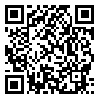Volume 3, Issue 2 (May 2018)
JNFS 2018, 3(2): 70-78 |
Back to browse issues page
School of Medicine, Mashhad University of Medical Sciences, Mashhad, Iran.
Abstract: (3044 Views)
Background: Diabetes mellitus is one of the most common chronic metabolic disorders. Nowadays there is an uprising trend toward new approaches in type 2 diabetes management. In this study the effect of Ginger supplementation on blood pressure in type 2 diabetic patients was examined. Methods: 81 patients with type 2 diabetes who were referred to Yazd Diabetes Research Center participated in this randomized clinical trial. Patients were randomly divided into two groups; Placebo (PG) and ginger supplemented (GG) groups. GG were supplemented with 3 ginger capsules (1 g ginger powder in each capsule) and PG received placebo. Systolic blood pressure (SBP), diastolic blood pressure (DBP), Pulse pressure (PP) and mean arterial pressure (MAP) were measured before the intervention, 2nd week, 4th week, 6th week, and at the end of the study (8th week). Results: The SBP, DBP, PP and MAP were decreased significantly in the GG
(P = 0.001) group at the end of week 8 and significantly decreased at the end of the study compared to the beginning of the study. No significant changes were observed in the PG. However, its mean was statistically different between two groups at the end of intervention. Conclusion: This study indicated that daily consumption of 3 g of ginger powder in capsules for 8 weeks by patients with type 2 diabetes decreases SBP, DBP, PP and MAP.
(P = 0.001) group at the end of week 8 and significantly decreased at the end of the study compared to the beginning of the study. No significant changes were observed in the PG. However, its mean was statistically different between two groups at the end of intervention. Conclusion: This study indicated that daily consumption of 3 g of ginger powder in capsules for 8 weeks by patients with type 2 diabetes decreases SBP, DBP, PP and MAP.
Type of article: orginal article |
Subject:
public specific
Received: 2018/05/1 | Published: 2018/05/1 | ePublished: 2018/05/1
Received: 2018/05/1 | Published: 2018/05/1 | ePublished: 2018/05/1
References
1. Al-Achi A 2009. A current look at ginger use. Retrieved 2007-08-02. Available From: URL: http://www. uspharmacist. com/oldformat. asp.
2. Alberti KGMM & Zimmet Pf 1998. Definition, diagnosis and classification of diabetes mellitus and its complications. Part 1: diagnosis and classification of diabetes mellitus. Provisional report of a WHO consultation. Diabetic medicine. 15 (7): 539-553.
3. Arablou T, Aryaeian N, Valizadeh M, Hosseini A & Djalali M 2014. The effect of ginger consumption on some cardiovascular risk factors in patients with type 2 diabetes mellitus. Razi journal of medical sciences. 21 (118): 1-12.
4. Azimi-Nezhad M, et al. 2008. Prevalence of type 2 diabetes mellitus in Iran and its relationship with gender, urbanisation, education, marital status and occupation. Singapore medical journal. 49 (7): 571.
5. Bordia A, Verma S & Srivastava K 1997. Effect of ginger (Zingiber officinale Rosc.) and fenugreek (Trigonella foenumgraecum L.) on blood lipids, blood sugar and platelet aggregation in patients with coronary artery disease. Prostaglandins, leukotrienes and essential fatty acids. 56 (5): 379-384.
6. Esteghamati A, et al. 2008. prevalence of diabetes and impaired fasting glucose in the adult population of Iran national survey of risk factors for non-communicable diseases of Iran. Diabetes care. 31 (1): 96-98.
7. Ghayur M & Gilani A 2004. Ginger: from myths to reality. Hand book of Ethnotherapies. Hamburg: Verlag Und Vertrieb.
8. Ghayur MN & Gilani AH 2005. Ginger lowers blood pressure through blockade of voltage-dependent calcium channels. Journal of cardiovascular pharmacology. 45 (1): 74-80.
9. Gilani AH 2005. Trends in ethnopharmacology. Journal of ethnopharmacology. 100 (1): 43-49.
10. Grzanna R, Lindmark L & Frondoza CG 2005. Ginger-an herbal medicinal product with broad anti-inflammatory actions. Journal of medicinal food. 8 (2): 125-132.
11. Langner E, Greifenberg S & Gruenwald J 1997. Ginger: history and use. Advances in therapy. 15 (1): 25-44.
12. Meaney E, et al. 2000. Formula and nomogram for the sphygmomanometric calculation of the mean arterial pressure. Heart. 84 (1): 64-64.
13. Miller LG & Murray WJ 1998. Herbal medicinals. A clinicians's guide. Pharmaceutical Products Press.
14. Mozaffari-Khosravi H, Ahadi Z & Barzegar K 2013. The Effect of Green Tea and Sour Tea on Blood Pressure of Patients with Type 2 Diabetes: A Randomized Clinical Trial. Journal of dietary supplements. 10 (2): 105-115.
15. Nicoll R & Henein MY 2009. Ginger (Zingiber officinale Roscoe)): A hot remedy for cardiovascular disease? International journal of cardiology. 131 (3): 408-409.
16. Paranjpe P, Patki P & Patwardhan B 1990. Ayurvedic treatment of obesity: a randomised double-blind, placebo-controlled clinical trial. Journal of ethnopharmacology. 29 (1): 1-11.
17. Sanghal A, et al. 2012. An experimental study to evaluate the preventive effect of Zingiber officinale (ginger) on hypertension and hyperlipidaemia and its comparison with Allium sativum (garlic) in rats. Journal of medicinal plants research. 6 (25): 4231-4238.
18. Shaw JE, Sicree RA & Zimmet PZ 2010. Global estimates of the prevalence of diabetes for 2010 and 2030. Diabetes research and clinical practice. 87 (1): 4-14.
19. Suekawa M, Aburada M & Hosoya E 1986. Pharmacological studies on ginger. II. Pressor action of (6)-shogaol in anesthetized rats, or hindquarters, tail and mesenteric vascular beds of rats. Journal of pharmacobio-dynamics. 9 (10): 842-852.
20. Suekawa M, et al. 1984. Pharmacological studies on ginger. I. Pharmacological actions of pungent constitutents,(6)-gingerol and (6)-shogaol. Journal of pharmacobio-dynamics. 7 (11): 836-848.
21. Wei Q-Y, Ma J-P, Cai Y-J, Yang L & Liu Z-L 2005. Cytotoxic and apoptotic activities of diarylheptanoids and gingerol-related compounds from the rhizome of Chinese ginger. Journal of ethnopharmacology. 102 (2): 177-184.
22. Weidner MS & Sigwart K 2000. The safety of a ginger extract in the rat. Journal of ethnopharmacology. 73 (3): 513-520.
| Rights and permissions | |
 |
This work is licensed under a Creative Commons Attribution-NonCommercial 4.0 International License. |



